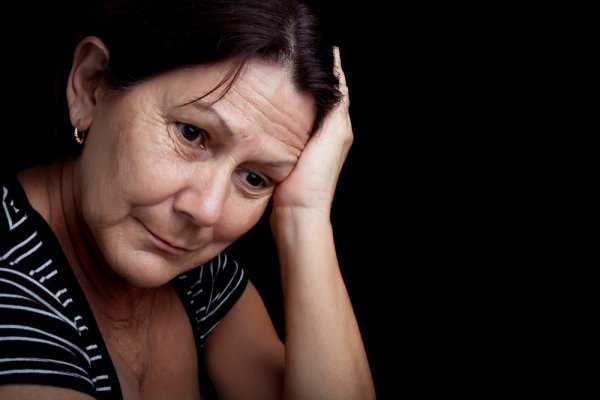There’s nothing like a crisis for revealing fault lines in a system. COVID-19 has put our social and economic structures under unprecedented pressure, exposing the gender inequality which sits at the heart of Australian public and private life.
It’s now well known that the health and economic impacts of the COVID-19 crisis have not been gender neutral. From an economic perspective, women have lost more jobs, more hours of work, women will lose more from hardship measure such as early access to withdrawing superannuation, have taken on the greater share of household chores. All of this while female-dominated industries which reduce such unpaid work – childcare and cleaning, for example – have struggled to continue operating.
Gender equality and inclusion of women’s vast contribution to society will be crucial to Australia’s economic recovery and resilience.
Yet gender equality and inclusion of women’s vast contribution to society will be crucial to Australia’s economic recovery and resilience. Increasing GDP is critical to the economy being able to bounce back from the crisis. Increasing women’s workforce participation is synonymous with that goal.
To put this in perspective, unpaid care and work, primarily done by women, was estimated to be worth $206 billion to the Victorian economy in 2017-18 alone. This independent analysis points to the enormity of this invisible contribution. It is unseen simply because it is unpaid.
 This invisibility creates inefficiencies: we can’t see the losses in productivity created when unpaid work prevents women from taking up paid employment, for example. A 2019 KPMG report found that if women’s workforce participation gap was halved from 10% to 5%, Australian households would be $140 billion better off over a 20 year period. The costs accrued when women miss out on superannuation and retire into poverty later in life need to be factored in.
This invisibility creates inefficiencies: we can’t see the losses in productivity created when unpaid work prevents women from taking up paid employment, for example. A 2019 KPMG report found that if women’s workforce participation gap was halved from 10% to 5%, Australian households would be $140 billion better off over a 20 year period. The costs accrued when women miss out on superannuation and retire into poverty later in life need to be factored in.
The lack of awareness of women’s economic activities makes it hard to dismantle the barriers to women’s economic contribution.
The lack of awareness of women’s economic activities makes it hard to dismantle the barriers to women’s economic contribution and is a lost opportunity to maximise our economic recovery.
If we want a cost-effective and inclusive recovery from the COVID-19 crisis, a gender-aware analysis is essential. It’s nearly crunch time – the federal budget, that is due to be handed down in October, will set the agenda. But the right processes and tools for such an analysis are not in place. Right now, there’s no gender analysis of expenditure and revenue built into the budget cycle which leaves Australia’s policy makers stumbling in the dark.
 Enter the hero[ine] of the hour: gender responsive budgeting.
Enter the hero[ine] of the hour: gender responsive budgeting.
Broadly speaking, gender responsive budgeting (GRB) is recognised internationally as a way of checking whether a country’s resource allocation matches its goals. GRB is widespread and growing – almost half of OECD countries have, are considering or are in the process of implementing GRB.
In practice, GRB is a set of tools and processes that analyse the gender-differentiated impacts of budget and revenue measures. It’s not about creating a budget for women, but a budget that equitably distributes benefits – to males and females. GRB involves multiple actors, including public service agencies, MPs, and civil society and its different tools can be implemented at different points throughout the budget cycle.
There are many different GRB models used around the world. GRB can be ex-ante (based on forecasts rather than actual results) or ex-post (based on actual results rather than forecasts) to the budget depending on the tools that are used.
Ex-ante tools are used as the budget is being formulated and before it is handed down. These include gender-aware policy appraisals, which ask how policies and resources are likely to progress or impede gender equality, and gender disaggregated public expenditure incidence analysis, a mouthful name for a tool which estimates the extent to which resources, such as child care or public transport, are used by, and so benefit, people of different genders.
These tools allow for a truly intersectional understanding of the impacts of the budget, and the potential for an inclusive recovery.
And there’s no reason these tools need to be limited to analysing impacts by gender – they can also be used to understand the budget implications for First Nations people, those from migrant or refugee background, ability or sexuality to allow for a truly intersectional understanding of the impacts of the budget, and the potential for an inclusive recovery.
The little GRB that has been implemented in Australia is largely ex-post. While the Australia pioneered GRB in the 1980s, it has since progressively dropped off the governmental policy agenda. The Office for Women released a Women’s Economic Security Statement in 2018, which laid out budget expenditure specifically targeted at women but fell short of a gender responsive budget statement, or a gendered analysis of the budget itself.
 A more comprehensive ex-post gender budget analysis was undertaken by civil society by the National Foundation for Australian Women in its Gender Lens on the Budget report.
A more comprehensive ex-post gender budget analysis was undertaken by civil society by the National Foundation for Australian Women in its Gender Lens on the Budget report.
While the technical capacity and data are available, political will has been found to be the most critical factor in implementing GRB.
While this evaluation is welcome on both counts, it remains a far cry from the kind of ex-ante analysis which would reveal, and correct gender inequalities and inefficiencies in the budget. But it’s not just a matter of having the right tools. In many cases, while the technical capacity and data are available, political will has been found to be the most critical factor in implementing GRB.
All of which is to say, Australia needs both the political will and the toolkit of gender responsive budgeting for a gender equitable and efficient COVID-19 recovery budget.
Helen Dalley-Fisher is the Convenor of the Equality Rights Alliance based in Canberra. ERA is Australia’s largest network of organisations advocating for women’s equality and leadership. Before ERA, Helen trained in law and worked in the community legal sector, where she specialised disability discrimination.





